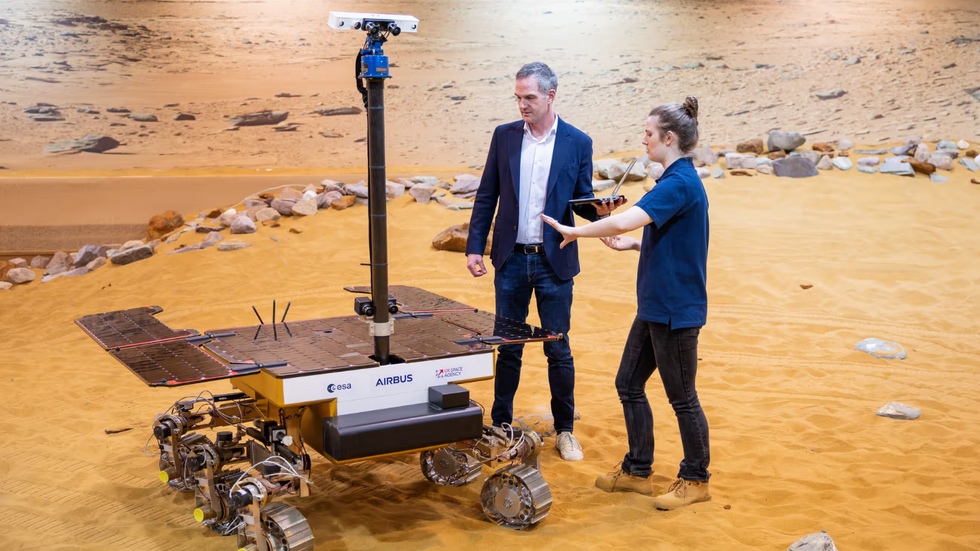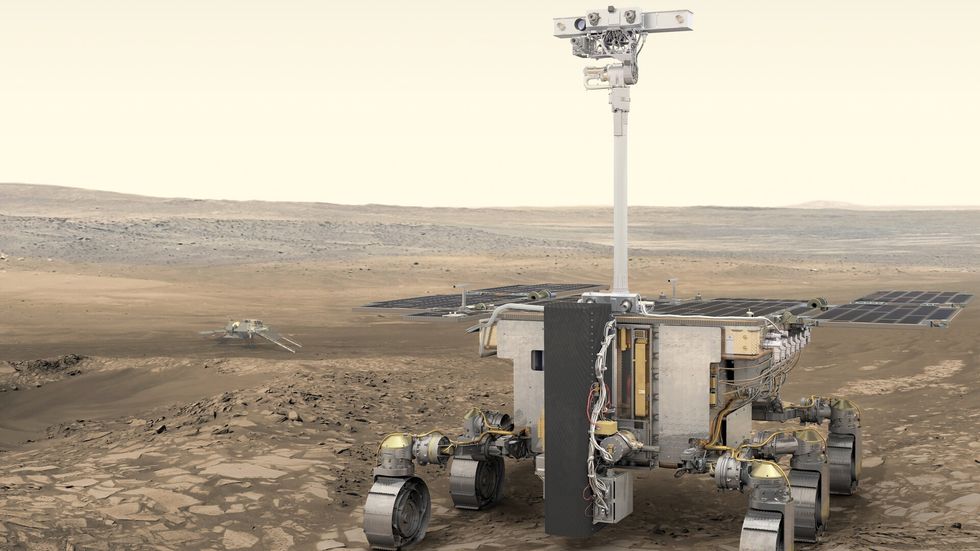A British-built Mars rover that has been stranded on Earth since Russia's invasion of Ukraine may soon be heading to the Red Planet.
The UK Space Agency has awarded a £150m contract to Airbus to build a replacement landing system for the Rosalind Franklin rover.
This crucial development puts the European Space Agency's mission back on track for a 2028 launch, with the rover having originally scheduled to land on Mars in 2023.
The rocket-powered system designed to ferry the rover to Mars' surface had been being built by Russia's space agency Roscosmos.
The UK Space Agency has awarded a £150m contract to Airbus to build a replacement landing system for the Rosalind Franklin rover
DSIT
After the invasion of Ukraine, ESA cancelled the contract - leaving the Rosalind rover stranded
GETTY
This forced ESA member states to make up the financial shortfall, before its completion was delayed by Covid restrictions.
The mission was then essentially grounded when Russia was removed from the project following its Ukraine invasion.
And now, Airbus has been contracted to build the lander as well as the rover.
This represents a significant boost for the UK space sector, though the challenge is substantial: the company has just three years to complete the project, and neither Airbus nor the UK has previously built a propulsion system for landing on another planet.
The mission faces additional pressure knowing that 60 per cent of Mars missions end in failure, many during landing.
Europe's last Mars lander, Schiaparelli, crashed in 2016, while the UK's previous Mars attempt, Beagle 2, met the same fate.
BRITISH SPACE BREAKTHROUGHS:
The Rosalind Franklin rover carries a drill capable of penetrating two metres into Martian soil
ESA
The Rosalind Franklin rover carries an on-board laboratory to test samples for signs of life.
Its unique advantage is a drill capable of penetrating two metres into Martian soil, which could reveal molecules protected from the harsh radiation on Mars' surface.
Having both the rover and lander built under the same roof in Stevenage, Hertfordshire, provides a confidence boost to the mission team.
"Before we were building our rover and had to rely on others to get it down safely.
"Whereas now we're playing a big part in that lander platform," said Chris Draper, head of Mars programmes at Airbus.
Nasa has since rejoined the partnership to provide the rocket - and if all goes to plan, Rosalind Franklin could be drilling into Mars by late 2030.

 By GB News (World News) | Created at 2025-03-30 22:01:02 | Updated at 2025-04-01 18:33:03
1 day ago
By GB News (World News) | Created at 2025-03-30 22:01:02 | Updated at 2025-04-01 18:33:03
1 day ago











